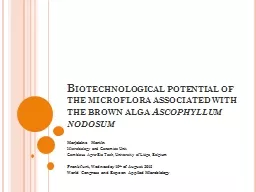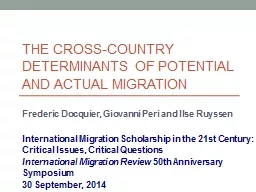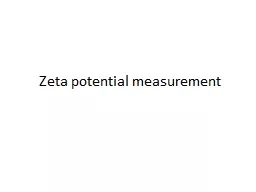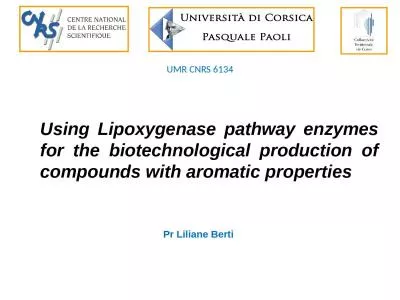PPT-Biotechnological potential of
Author : olivia-moreira | Published Date : 2015-11-26
the microflora associated with the brown alga Ascophyllum nodosum Marjolaine Martin Microbiology and Genomics Unit Gembloux AgroBio Tech University of Liège
Presentation Embed Code
Download Presentation
Download Presentation The PPT/PDF document "Biotechnological potential of" is the property of its rightful owner. Permission is granted to download and print the materials on this website for personal, non-commercial use only, and to display it on your personal computer provided you do not modify the materials and that you retain all copyright notices contained in the materials. By downloading content from our website, you accept the terms of this agreement.
Biotechnological potential of: Transcript
Download Rules Of Document
"Biotechnological potential of"The content belongs to its owner. You may download and print it for personal use, without modification, and keep all copyright notices. By downloading, you agree to these terms.
Related Documents














